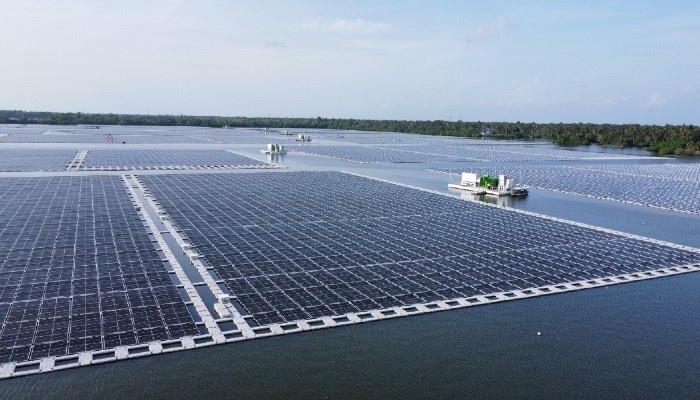News
JUST IN: India Surges Past Japan in Global Solar Race

India has recently surpassed Japan in solar energy generation, becoming the world’s third-largest producer after China and the United States.
In 2024, India generated approximately 108,494 GWh of solar electricity, outpacing Japan’s 96,459 GWh.
It marked a significant milestone in India’s renewable energy journey and positioning it as a global leader in clean power production.
This achievement is part of India’s broader commitment to expanding non-fossil fuel energy capacity, aligning with its climate goals established during the COP26 summit in Glasgow.
India has demonstrated rapid growth in solar photovoltaic (PV) capacity, installing about 12 GW of new solar capacity in 2023 despite some supply-chain challenges.
There are expectations of accelerated deployment in 2024 as those constraints ease.
By October 2024, India had achieved around 200 GW of renewable energy capacity overall.
It began pursuing an ambitious target of tripling renewables by 2030 to reach 500 GW of clean power.
India’s solar capacity expansion is supported by major government initiatives, policy frameworks, and visionary leadership.
This is under Prime Minister Narendra Modi, who has championed large-scale solar projects and clean energy infrastructure.
The nation launched its National Solar Mission in 2010, aiming for 20 GW of solar capacity initially and later targeting 100 GW by 2022, a goal it met ahead of schedule.
The government also encourages irrigation solar pumps, solar power for rural electrification, and large solar parks.
These include the Kurnool Ultra Mega Solar Park, the Kamuthi Solar Power Project, and others that contribute significantly to the installed base.
In contrast, Japan, which historically occupied the third spot in solar energy generation, has seen steady but slower growth.
Japan produced 96,459 GWh of solar power in 2024, supported by policies such as feed-in tariffs, subsidies, and regulatory mandates like mandatory solar panels on new homes in Tokyo starting 2025.
Solar power now constitutes about 10% of Japan’s electricity generation mix.
Japan’s government has shifted focus toward renewables partly following the 2011 Fukushima nuclear disaster.
It reportedly has an eye toward achieving 108 GW of solar capacity by 2030 and aiming for net-zero emissions by 2050.
Globally, China remains the world leader by a wide margin, installing 260 GW of solar PV in 2023 alone.
This is nearly tripling the previous year’s additions as part of its 14th Five-Year Plan for Renewable Energy capacity expansion.
The United States also made significant gains, boosted by funding from the Inflation Reduction Act, achieving record solar PV additions of 32 GW in 2023.
This increased nationwide solar generation by 70% compared to prior years.
India’s leap past Japan in solar generation is notable not only for total production but also for scaling while addressing high and growing electricity demand.
India’s demand for electricity rose about 5% annually in 2024, one of the fastest in the world, necessitating diverse energy sources including coal and renewables.
Although coal-fired generation remains large and emissions have increased, India is actively transitioning toward renewables for sustainable growth.
In summary, India’s ascension to the third position in solar energy generation is a testament to its robust renewable energy policies, technological adoption, and infrastructure investments.
The country’s progress exemplifies a growing global clean energy transition.
Meanwhile, Japan continues steady progress with a strong policy framework, and China and the US lead the global market through massive scale and incentives.
India’s trajectory suggests potential for even greater solar capacity growth as supply issues alleviate and auction volumes expand in the coming years.
This development reshapes the global solar energy landscape.
It also underscores the pivotal role emerging economies play in combating climate change by accelerating renewable adoption and diversifying their energy mix for resilience and sustainability.
For Diaspora Digital Media Updates click on Whatsapp, or Telegram. For eyewitness accounts/ reports/ articles, write to: citizenreports@diasporadigitalmedia.com. Follow us on X (Fomerly Twitter) or Facebook










